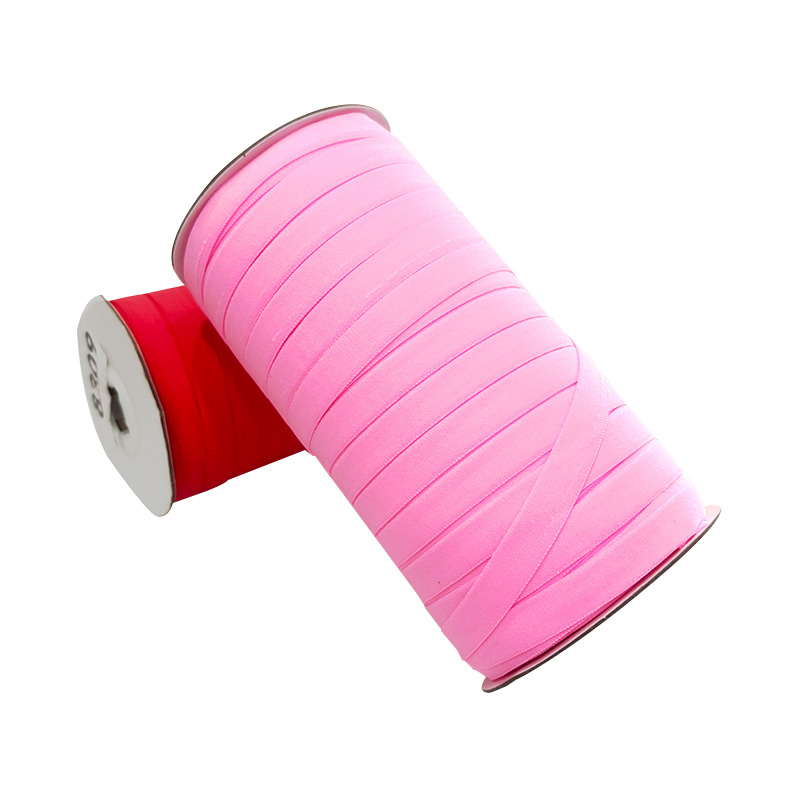Industry
 By Admin
By Admin
How Monofilament Elastic Is Used In Swimwear And Lingerie
Monofilament elastic is a versatile material that finds many uses in the world of swimwear and lingerie. Known for its flexibility and subtle appearance, this type of elastic offers unique benefits compared to traditional elastic bands. In swimwear and lingerie, monofilament elastic helps provide gentle support, shaping, and comfort without adding bulk or visible lines. This makes it a popular choice for garments that demand both function and delicate aesthetics.
One of the main reasons monofilament elastic is favored in these applications is its thin profile. It blends smoothly with the fabric, allowing swimwear and lingerie to maintain a sleek and seamless look. For example, in swimwear, monofilament elastic is often used along edges and seams where flexibility and strength are required without compromising the garment's form. This elastic type stretches well and recovers its shape, which helps swimwear keep a snug fit even after exposure to water and frequent wear.
In lingerie, the softness and lightweight nature of monofilament elastic are especially valuable. It provides gentle support in bras, panties, and other intimate apparel without digging into the skin. This elastic is comfortable for long periods of wear, which is essential for everyday lingerie pieces. Its discreet appearance is a benefit when delicate lace or sheer fabrics are involved, as it does not interfere with the design.

Alongside monofilament elastic, other related materials often complement its use. For instance, Hook-and-Loop Cable Ties components are sometimes combined with elastic bands to create adjustable features in lingerie and swimwear. The hook-and-loop cable ties allow for easy fastening and adjustment, offering wearers a personalized fit. When paired with monofilament elastic, these straps contribute to both comfort and functionality, ensuring the garment stays in place without excessive tightness.
Elastic cord string is another accessory frequently used in swimwear and lingerie production. This flexible cord adds extra stretch and is ideal for drawstring closures, adjustable straps, or decorative accents. Its compatibility with monofilament elastic allows designers to craft pieces that balance strength and flexibility. For example, a swimsuit might feature an elastic cord string in its side ties, enabling wearers to customize the fit. Similarly, lingerie sets might incorporate elastic cord string in decorative bows or to add subtle stretch in certain areas.
Interestingly, the elastic string for face masks has also become a relevant product in recent years. Though primarily intended for face coverings, this elastic string shares some properties with monofilament elastic, such as softness and stretch. Some manufacturers repurpose elastic string for face masks in lingerie and swimwear production, particularly when a gentle yet secure hold is needed. This crossover highlights how versatile elastic materials are and how they can be adapted for different uses.
Durability is another reason monofilament elastic is preferred in swimwear. Swimwear often undergoes harsh conditions, including exposure to chlorine, saltwater, and sun. Monofilament elastic stands up well to these elements, maintaining elasticity and shape after repeated use. This reliability makes it suitable for both casual swimwear and performance pieces. Combined with hook-and-loop cable tie adjustments and elastic cord string details, monofilament elastic contributes to garments that last longer and fit well over time.
When it comes to lingerie, the stretch and recovery of monofilament elastic help maintain the intended shape and support of the garment. Lingerie pieces are often designed to contour the body, and elastic components must stretch comfortably without losing their hold. Monofilament elastic's ability to stretch repeatedly without deformation is crucial here. The addition of hook-and-loop cable tie fastenings can further enhance adjustability, while elastic cord string may be used to add a touch of flexibility or decoration.
Aside from its functional roles, monofilament elastic also benefits the aesthetics of swimwear and lingerie. Its transparent or nearly invisible appearance means it does not detract from fabric patterns or intricate details. This allows designers to focus on the garment's visual appeal without worrying about bulky or obvious elastic bands. The hook-and-loop cable ties, elastic cord string, and elastic string for face masks all come in various colors and thicknesses, allowing them to blend or contrast creatively depending on the design goals.
In summary, monofilament elastic plays an important role in the production of swimwear and lingerie. It provides the right balance of flexibility, comfort, and subtlety, which are key factors for garments worn close to the skin. The integration of hook-and-loop cable tie fasteners, elastic cord string features, and even elastic string for face masks complements monofilament elastic's properties, resulting in garments that are both functional and visually appealing. As fashion continues to evolve, these materials remain fundamental to delivering quality and comfort in intimate apparel and swimwear alike.



 English
English Español
Español عربى
عربى Tiếng Việt
Tiếng Việt

